 Do you experience seasonal climate changes? If you are in the northern hemisphere, I bet you are already feeling the warm weather grooming rush. One week you are slow, then suddenly the sun comes out. The temperature begins to rise. Instantly, your phone starts to ring off the hook.
Do you experience seasonal climate changes? If you are in the northern hemisphere, I bet you are already feeling the warm weather grooming rush. One week you are slow, then suddenly the sun comes out. The temperature begins to rise. Instantly, your phone starts to ring off the hook.
Let me ask you this.
- Are you staffed to handle the load?
- Are you going to be working 12 hour days, six days a week and still not get caught up?
- Are you booked out solid for 4 weeks or more?
- Are clients and potential customers getting frustrated or even angry because you can’t book them as quickly as they’d like?
If you answered “yes” to any of those questions, you’re not alone. When the spring rush hits, groomers are in short supply everywhere!
Finding qualified help is the #1 problem for most business owners.
How often have you advertised for a new bather or groomer and have been able to fill the job immediately? Hardly ever, right? Even after you’ve filled the position, how often has that person been able to perform that job without any guidance or direction from you?
If yours is like most grooming salons, it’s next to impossible to hire the ready-made job applicant. It’s rare to find a person who will be everything you need, right away. Even if you do find great candidates, it’s still going to take work to bring them up to speed. To bring them in line with the way YOU do things in your business. To teach them your culture.
Finding the right people to build your team is always the most challenging part of running any business.
Training is at the heart of all great employees. Unfortunately, training takes time and effort. Both of those equate to money out the door. One of the most frustrating things for any business is to go through the training process only to have the new hire leave shortly after training has been completed. However, if you’re going to run a business that has any growth, you’re going to need to hire help.
How do you find great job candidates who will stay with you? I’m not just talking bathers, groomers, and stylists. I’m talking about anybody that would add value to your business and your team.
I wish there was a simple and clear-cut answer to this very old problem. There’s not.
The best way to get started down the hiring path is finding job candidates with potential. Here are a few things I always think about when looking at prospective job candidates.
 Where to Find Them
Where to Find Them
You are going to need somebody who understands that working with dogs takes WORK. A lot of work. I look for proof that they are willing to work. Willing to commit. I scan their resume for clues.
Rural Background
I have found that some of our best employees and students come from a more rural background. Being brought up on a farm always teaches valuable work ethics. Many times, they will have 4H in their background. Being active with horses or dogs is also a positive attribute. So is someone coming from a veterinarian clinic, animal rescue, or any professional pet-related background.
Students and Recent Graduates
Look at attendance records and GPA, not just a certificate or diploma. Check their extracurricular activities. Was s/he in band, sports, or Student Council? These things will indicate how disciplined and focused a job candidate will be. It will also tell you if that person has worked as part of a team.
Previous Job Experience
Check prior work history. Does the candidate have the experience or skills to do the job? Do they have any previous professional experience working with animals?
Here’s a list of traits that make a great new hire. Look for these behaviors during the interview and during their initial trial period.
- They listen with intent.
- They are confident but not arrogant.
- They have the ability to express themselves.
- They ask questions.
- They are motivated to improve their current skill levels
- The understand directions.
- They have the ability to focus.
- They have organizational skills.
- They have the ability to prioritize tasks.
- They are willing to try something new.
- They are open and receptive to constructive criticism.
Here are a few tips when it comes to evaluating a new candidate.
- Ask for references and call them.
- Treat everyone with respect.
- Look for attitude – hire based on potential.
- Learn to trust your gut.
- Look for a warm smile.
Once you have a new team member, it’s up to you to provide the training that will guide them. Every salon is slightly different. You want your new hire to succeed. That means you are going to have to put in some effort. They need to be clear on your rules and expectations. Ideally, these rules and expectations will be printed in an employee manual – even if it’s only a few pages!
Observe how they work. Even with the most basic tasks like answering phones or washing dogs, many new hires need to be gently coached. Even if their skill level is weak, if they have the right attitude, you will be able to train them quickly. But you must understand where they are in their current level of training. And the only way to learn that is by having them demonstrate their work.
Books and videos can be extremely helpful to the training process, as well. But don’t just assume they are reading and watching the material – and understanding it. You will still need to observe them carefully for the first few weeks, making sure the information in the books and videos is being correctly implemented.
I learned a long time ago that I prefer to cultivate my own team from scratch. That way they learned our culture. Our expectations. They came without a lot of baggage we need to change. If I was fair with them, in return, they were fair with me, staying with my team for years.
Not everybody will stick with you, long-term. That’s all right. It’s part of the hiring process. Part of running a business. You learn to work with it. Always keep your eyes open for great candidates to join your team. Once you know what to look for, the hiring process becomes a bit easier.
Learn2GroomDogs.com members – check out these links for more information:
What to look for in New Hires / How to Keep New Employees – with Melissa Verplank and Judy Hudson
Not a subscriber, yet? Click here to join Learn2GroomDogs.com and get more amazing video lessons like the two mentioned here.
 Jump on the Learn2GroomDogs.com Facebook page and tell us what you think.
Jump on the Learn2GroomDogs.com Facebook page and tell us what you think.

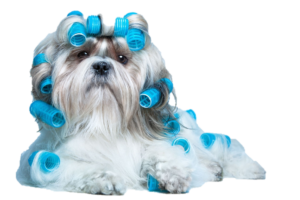
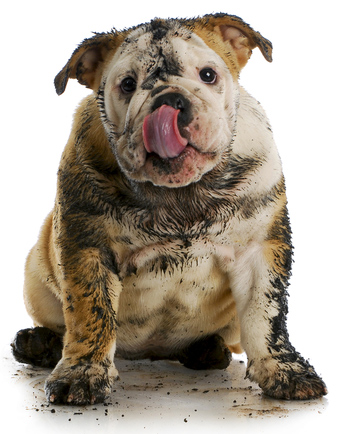
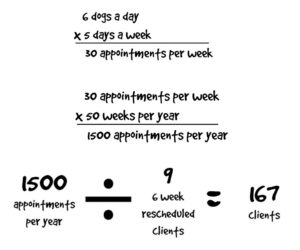
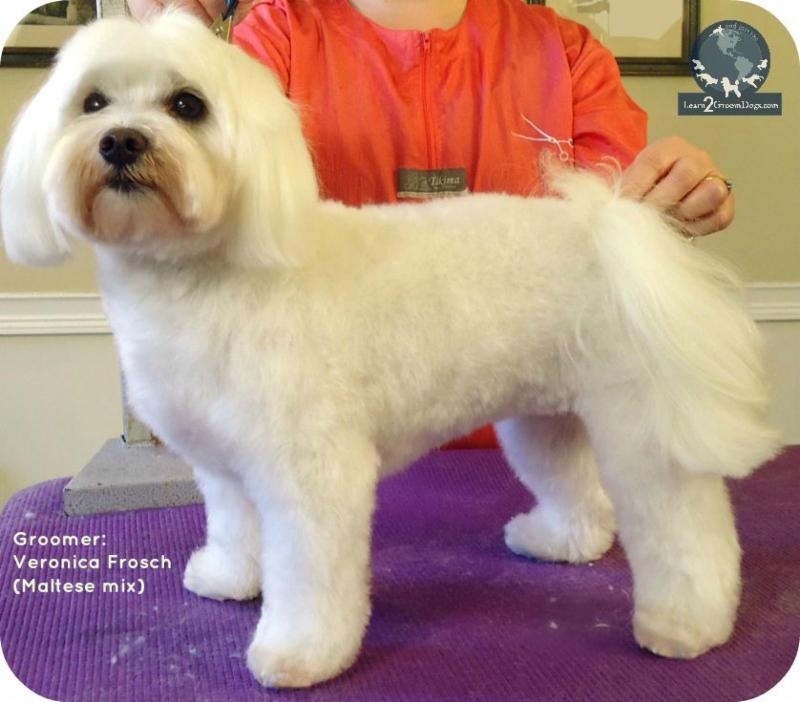 Don’t you love it when an owner walks into a salon and ask for this trim by name? They actually think this is a universal standard trim that all groomers and pet stylists should know how to do. When we start asking them questions, they get all huffy, thinking we don’t know how to do our jobs. Frustrating!! You and I know there isn’t a consistent right way to do a “puppy cut.” There are many – many variations!
Don’t you love it when an owner walks into a salon and ask for this trim by name? They actually think this is a universal standard trim that all groomers and pet stylists should know how to do. When we start asking them questions, they get all huffy, thinking we don’t know how to do our jobs. Frustrating!! You and I know there isn’t a consistent right way to do a “puppy cut.” There are many – many variations!
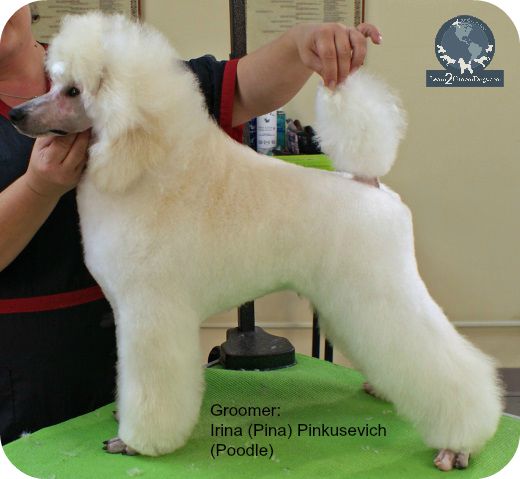 It’s important to keep this in mind, too: one person’s interpretation of a puppy cut might be that of a smooth-coated puppy. Think Boxer, Pug, or Beagle. Another person’s interpretation would be that of a fluffier breed like a Shih Tzu, Bichon, or Poodle. There’s also a big difference between a four-week old puppy and a ten-week old puppy in terms of coat growth.
It’s important to keep this in mind, too: one person’s interpretation of a puppy cut might be that of a smooth-coated puppy. Think Boxer, Pug, or Beagle. Another person’s interpretation would be that of a fluffier breed like a Shih Tzu, Bichon, or Poodle. There’s also a big difference between a four-week old puppy and a ten-week old puppy in terms of coat growth.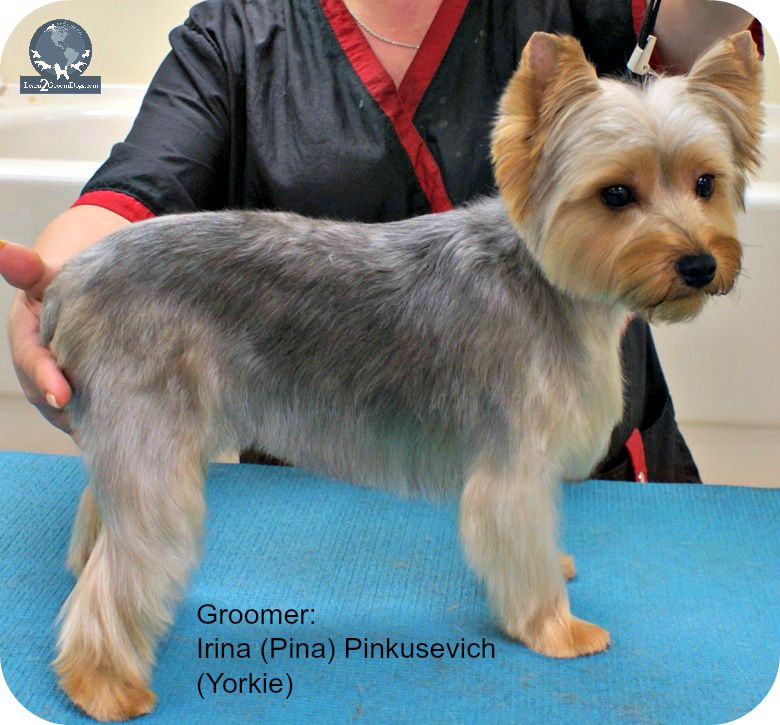 Here is a list of talking points when a new client request a “puppy cut.”
Here is a list of talking points when a new client request a “puppy cut.”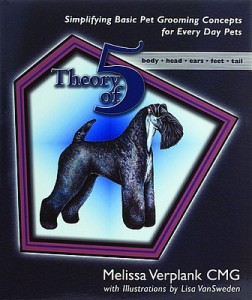
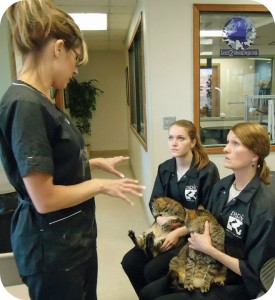

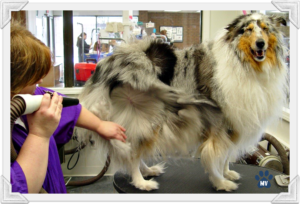 By Melissa Verplank, CMG & Paragon Founder
By Melissa Verplank, CMG & Paragon Founder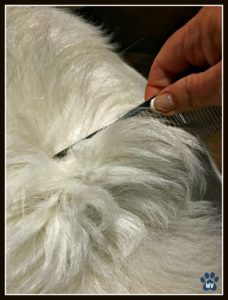 After a recent grooming session, our Maremmas came home looking and feeling great. However, although one looked amazing, a closer inspection told a different story. Her loose and shedding coat was still stuck next to her skin. In another week, we were going to have a mess. She was going to start leaving tufts of white fur everywhere. When done well, all the packed coat is removed and a comb will glide through the coat from the skin out. Each hair shaft stands independently. This wasn’t the case with this grooming.
After a recent grooming session, our Maremmas came home looking and feeling great. However, although one looked amazing, a closer inspection told a different story. Her loose and shedding coat was still stuck next to her skin. In another week, we were going to have a mess. She was going to start leaving tufts of white fur everywhere. When done well, all the packed coat is removed and a comb will glide through the coat from the skin out. Each hair shaft stands independently. This wasn’t the case with this grooming.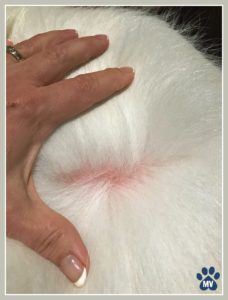 A powerful high velocity dryer or “blaster” is the key to getting through this type of grooming job. A powerful stream of air from the high velocity dryer will do the bulk of the work for you when it comes to removing mats, tangles, and shedding coat. Ideally, you will want to have a condenser cone on the nozzle of the dryer when you first start the drying process. On well-behaved dogs who enjoy the high velocity dryer, two or even three high velocity dryers can be used to speed up the entire process. On pets that have a lot of mats, tangles, and densely packed coat, using a high velocity dryer with a condensing nozzle to blow the shampoo out of the coat on the second lather in the tub is a great trick. What do you do when you have a ring on your finger that you can’t get off? Apply soap, right? The same principle applies. The shampoo provides the lubrication and air pushes the hair apart. Easy on the dog – and easy on you.
A powerful high velocity dryer or “blaster” is the key to getting through this type of grooming job. A powerful stream of air from the high velocity dryer will do the bulk of the work for you when it comes to removing mats, tangles, and shedding coat. Ideally, you will want to have a condenser cone on the nozzle of the dryer when you first start the drying process. On well-behaved dogs who enjoy the high velocity dryer, two or even three high velocity dryers can be used to speed up the entire process. On pets that have a lot of mats, tangles, and densely packed coat, using a high velocity dryer with a condensing nozzle to blow the shampoo out of the coat on the second lather in the tub is a great trick. What do you do when you have a ring on your finger that you can’t get off? Apply soap, right? The same principle applies. The shampoo provides the lubrication and air pushes the hair apart. Easy on the dog – and easy on you.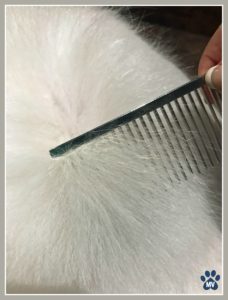 Be methodical. Be kind.
Be methodical. Be kind. 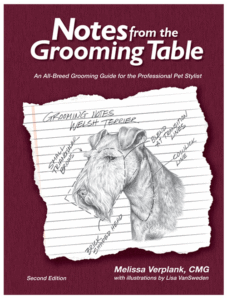
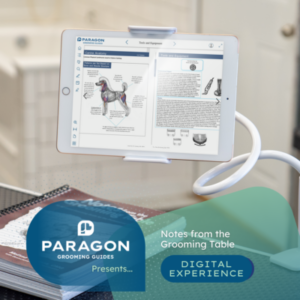

 Learn2GroomDogs.com
Learn2GroomDogs.com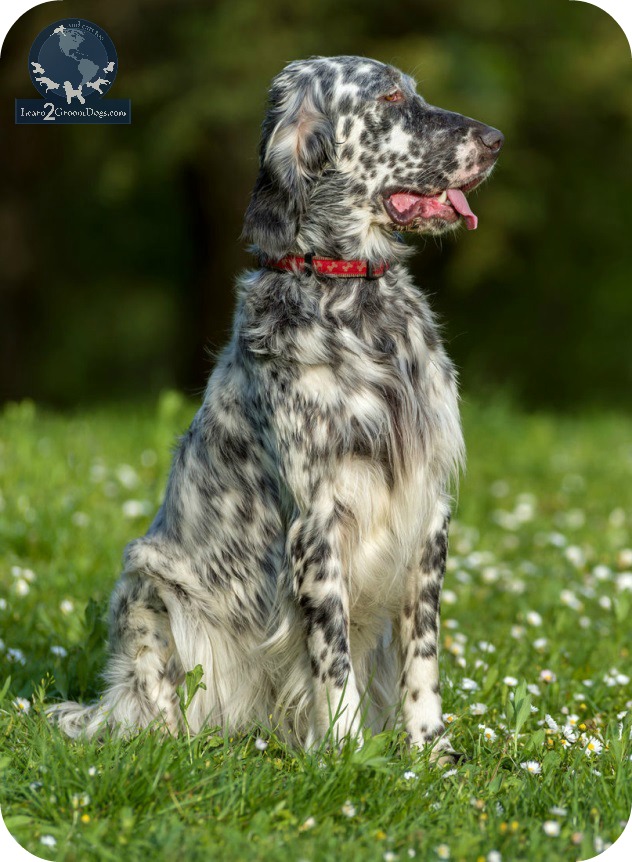 Excellent grooming starts always starts with a firm understating of canine anatomy. It is the FOUNDATION of all grooming.
Excellent grooming starts always starts with a firm understating of canine anatomy. It is the FOUNDATION of all grooming.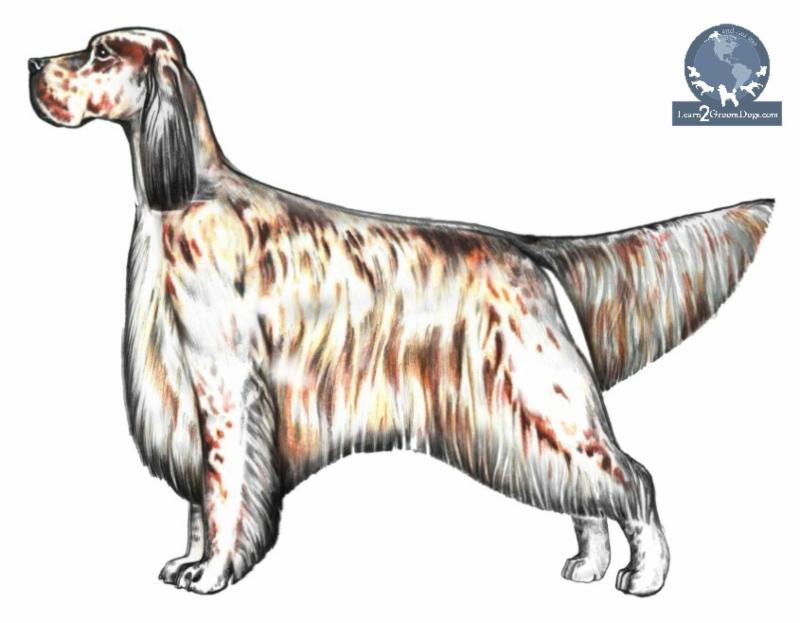 The Essence of the Breed
The Essence of the Breed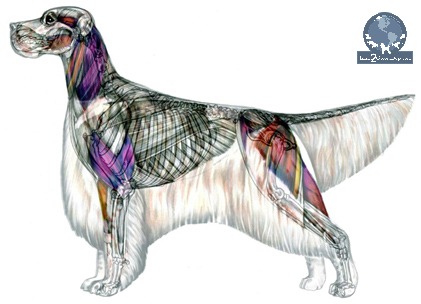 Landmarks for Grooming & Styling
Landmarks for Grooming & Styling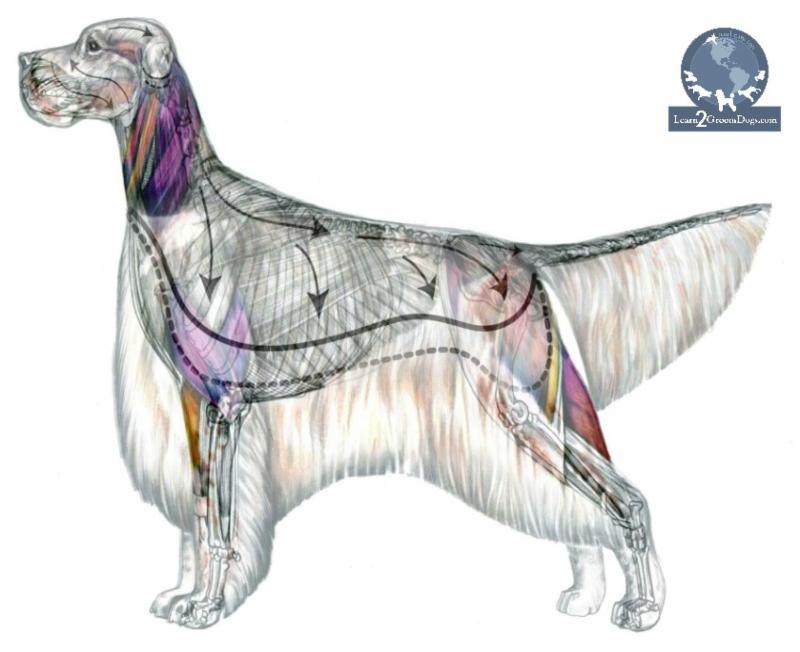 Shoulder: Use the turn of the muscle at the shoulder to set the jacket pattern on the body.
Shoulder: Use the turn of the muscle at the shoulder to set the jacket pattern on the body. All these areas are natural landmarks used as reference points on any breed. When you combine anatomy with the official breed standard for any purebred dog, you have knowledge. You can use this understanding to accentuate the proper structure of the English Setter.
All these areas are natural landmarks used as reference points on any breed. When you combine anatomy with the official breed standard for any purebred dog, you have knowledge. You can use this understanding to accentuate the proper structure of the English Setter.


 P.S. How do you build teamwork in your salon?
P.S. How do you build teamwork in your salon? 
 In many of my business lectures, I ask my audience how many of them take regular vacations. I’m always shocked when I see how many pet professionals don’t schedule vacations or downtime for themselves.
In many of my business lectures, I ask my audience how many of them take regular vacations. I’m always shocked when I see how many pet professionals don’t schedule vacations or downtime for themselves.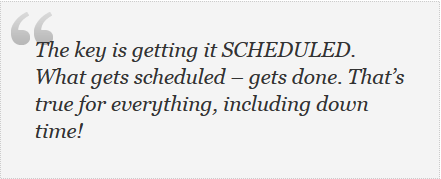
 Full Days – Book a day just to do something fun and special. You might opt to include only yourself. Or plan an activity with friends. Or with family. Many times, special days don’t require money but they do require time and planning.
Full Days – Book a day just to do something fun and special. You might opt to include only yourself. Or plan an activity with friends. Or with family. Many times, special days don’t require money but they do require time and planning.
 P.S. How do you unplug? If you don’t – or can’t – tell us why.
P.S. How do you unplug? If you don’t – or can’t – tell us why. 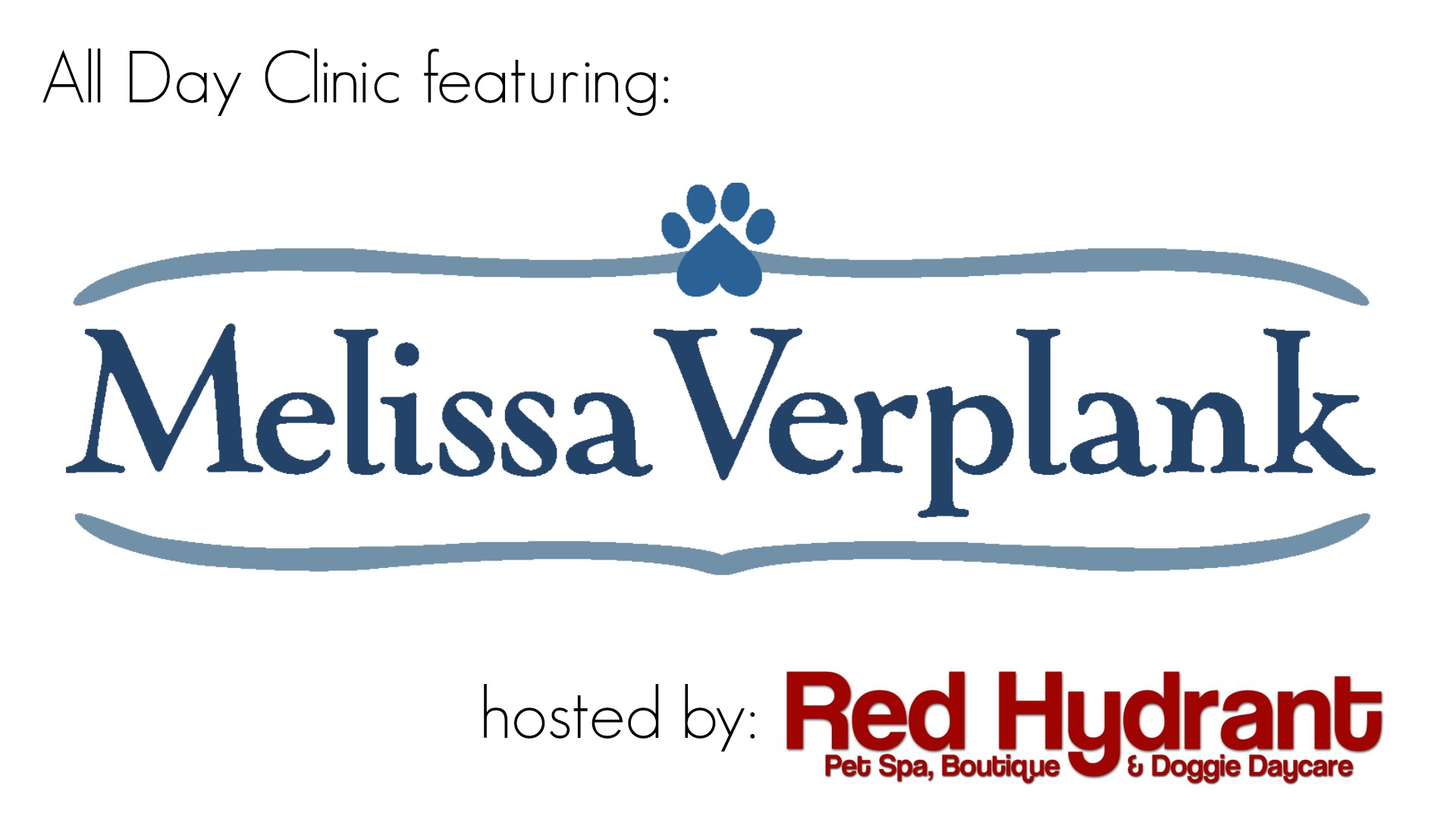
 Setbacks.
Setbacks.


